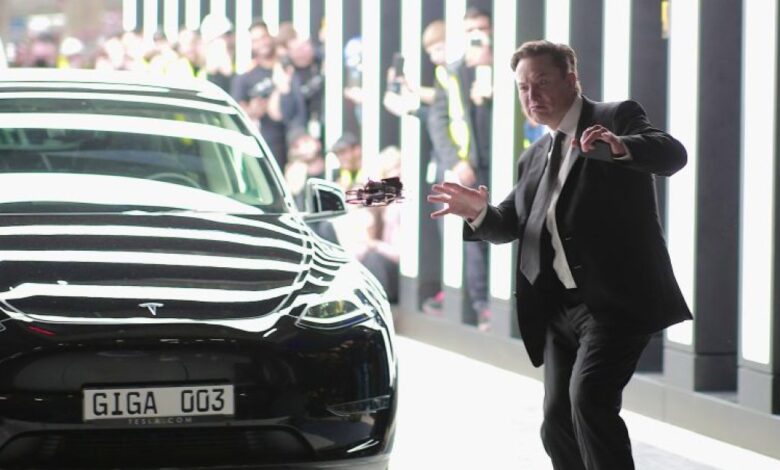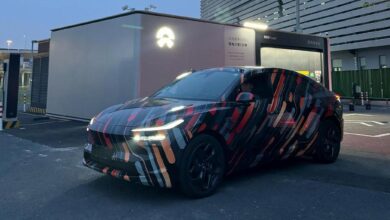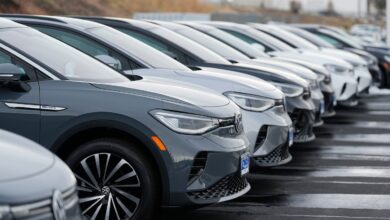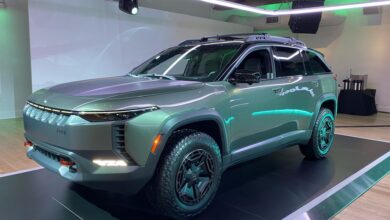Tesla Is in Panic Mode After Earnings Call. Can Elon Fix It?

Elon Musk is fighting many battles right now: Against a Brazilian Supreme Court judge, the Australian Prime Minister, Don Lemon, OpenAI, and a nonprofit watchdog, to name a few.
But Musk says that he’s now spending the majority of his work time on one of his oldest ventures: Tesla. And Tesla badly needs help. The carmaker released its quarterly earnings report yesterday and revealed that its profits fell 55% and revenue fell 9%—figures even worse than many analysts had anticipated. The company announced its intentions to lay off more than 10% of its staff, or about 14,000 people, including major cuts in California and Texas.
Musk soothed investors on Tuesday with some lofty promises about imminent Tesla products. He is now faced with enormous challenges: to remain a leader in a rapidly-crowding electric vehicle space, cut costs while rushing out new cars, all the while forging ahead with his dream of making Tesla an AI powerhouse. “They’re still in a very dark place in this woods that they have to get out of,” says Craig Irwin, an analyst at Roth Capital Partners.
Tesla’s Struggles in the EV Market
Tesla has long been a pioneer in the EV (electric vehicles) space. It now faces two major obstacles in continuing to grow that business: waning consumer interest, and increased competition. Recent polls have shown that public interest in owning an electric car has declined, and that consumers want lower-priced EVs that do not currently exist. Many are also skeptical about the current charging infrastructure, which can make driving an EV on an everyday basis much more unwieldy than its gas counterparts.
Many automakers have also entered the space with their own electric or hybrid cars. BMW, Mercedes, Hyundai and Kia have seen recent promising EV sales. Earlier this year, the Chinese automaker BYD briefly surpassed Tesla as the world’s top-selling electric carmaker. Stateside, General Motors recently announced it would ramp up its electric vehicle production.
And it hasn’t helped that Tesla’s innovation in the EV space has slowed. In 2022, the company decided not to put out any new car models—a risky choice in an industry that relies upon new or redesigned models to keep buyers’ interest. The Cybertruck, one of Tesla’s most-hyped releases, has performed well below expectations: It sold only around 4,000 vehicles, and then faced a massive recall due to a defect that caused the accelerator to sometimes get stuck when pressed.
Musk has long dangled the dream of releasing a Model 2 EV that would cost $25,000 and bring Tesla into the mass market. But Reuters reported earlier this month that the company had scrapped plans for that make. At Tuesday’s earnings report, however, Musk announced that a “more affordable” EV would be in production by early 2025, and would be built without needing a new factory or production line. This announcement alone cheered investors: shares jumped 13% in after-hours trading.
Irwin says that an affordable EV could play especially well in Europe and Asia, where people drive less and are more conscious about gas consumption. But he and others are skeptical of Tesla’s ability to deliver on time. “Them pulling forward is kind of comical, because they’ve only ever been late,” he says.
Constant Drama
As Tesla attempts to race ahead, it will try to outrun a slew of controversies surrounding both the company and Musk himself. In 2022, a California governmental agency sued Tesla for widespread discrimination against Black workers. That suit is still pending. Tesla also faces a separate investigation from the U.S. Equal Employment Opportunity Commission (EEOC). And the company has been sued by several women over alleged workplace sexual harassment. (Tesla has maintained it does not tolerate workplace harassment.)
Then there’s the media circus that surrounds Musk’s every move. Last year, Tesla investors grew concerned that Musk was spending too much time on X (formerly known as Twitter). Musk’s antics on X, which often criticize progressive policy and “wokeness,” seem to have alienated many of his customers: While people concerned about climate change were some of the first adopters of electric vehicles, the proportion of Democrats buying Teslas fell by more than 60%, according to car buyers surveyed in October and November by researcher Strategic Vision.
Read More: Tesla’s Latest Scandals Could Hurt Its Bottom Line
Musk is also spending ample time on SpaceX—which has been plagued by workplace injuries—and his artificial intelligence startup, xAI. As he engages in many different endeavors, he has insisted that he should have more control of Tesla, not less. He demanded 25% voting control of the company, and threatened to divert his energy on making AI products outside Tesla unless the board appeased his wishes.
Will Musk’s AI Bet Pay Off?
Despite Tesla’s current struggles, Musk has much grander visions for the company beyond EVs. Tesla, he said on Tuesday, should be “thought of as an A.I. and robotics company.” He is especially gung-ho about Tesla becoming a leader in the autonomous driving space. “If somebody doesn’t believe Tesla is going to solve autonomy, I think they should not be an investor in the company,” he added.
On Tuesday, Musk reiterated his commitment to creating a self-driving car, which he dubbed the “Cybercab.” Such a product, if successful, could be enormously profitable for Musk. The management firm Ark Invest recently forecasted that robotaxis, if rolled out successfully, could generate $28 trillion over the next five to ten years.
But the road to self-driving taxis is incredibly rocky, and has been littered with failed promises. In 2019, Musk claimed that Tesla would have a million autonomous taxis on the road the next year—but none have yet materialized. Tesla does not yet have a license to test driverless vehicles in California. And one of the early players in the space, General Motors’ Cruise, suffered an extreme setback when one of their cars struck a pedestrian and then dragged her along the road.
“The reality is the software today is flawed, and there are real accidents happening due to optical apparition,” Irwin says. “Does Tesla deserve credit for pushing the envelope? Absolutely. But I think their claims are far too aggressive for where reality is going to land.”



